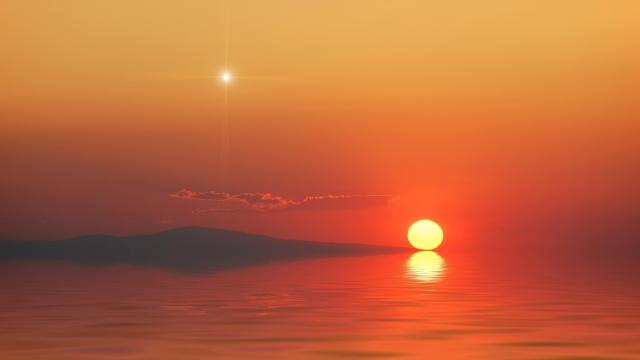If you’ve ever heard anyone mention the morning star(s) and the evening star(s) and didn’t know what they meant, here’s what’s really going on up there in the heavens. First off, the names are misleading. “Morning star” and “evening star” both originally referred to the same celestial object, and it’s not a star at all. It’s Venus, the third brightest object in the sky, behind the sun and the moon.
Venus always appears close to the sun, but because of its orbit, it sometimes appears to be leading the sun and sometimes following it. When Venus is trailing the sun, it appears in the sky moments after the sun goes down. This is when it is called an “evening star.” When it’s “leading” the sun, it appears to rise near dawn, just before the sun comes up. That’s when it’s called a “morning star.”
Ancient astrologers made a huge mistake
Egyptian, Mayan, Greek, and other cultures’ star-gazers understandably believed Venus was two separate stars. They thought the same thing about Mercury, which also appears relatively close to the sun. Around the 5th century BC, Pythagoras delineated the objects as two separate planets, but it wasn’t until 1543 when Copernicus straightened everything out by discovering that Earth is a planet, too, and all the planets revolve around the sun.
On “wandering stars” and whether they are “morning” or “evening” stars
Because Venus isn’t the only planet we can see in the sky without a telescope, we now refer to “morning stars,” which are Venus, Mercury, Mars, Jupiter, Saturn, and sometimes Uranus (if it’s very dark, and you have good eyesight). These used to be called “wandering stars.”
Determining whether Venus and Mercury (aka the “inferior planets”) are considered morning or evening stars is usually easy; it’s determined by how they appear relative to the sun. But with the other, “superior,” planets, it get a little trickier, and can involve morning stars becoming visible just after sunset and vice-versa. Here’s how space.com describes it:
In order to differentiate between what qualifies for the branding as a “morning star” versus an “evening star,” we would say that during the time frame from when a planet is moving from its conjunction with the sun to just a day prior to its opposition (when it is directly opposite to the sun in the sky) it is considered a “morning star.” At opposition, the superior planet in question would be rising when the sun sets and sets as the sun rises. From then on it is branded as an “evening star,” rising or already in the sky as daytime ends.
Did you miss the Venus Transit? Too bad for you.
Occasionally, Venus appears to pass in front of the sun and blocks out some sunlight, like a wee eclipse. On average, this transit happens every 80 years, but more accurately, it’s a “pair of pairs” pattern that repeats every 243 years. So if you caught the Venusian Transit on June 8, 2004, you could get a repeat showing in June 2012. If you missed it, you’ll have to wait until 2117. Sorry.

Leave a Reply
You must be logged in to post a comment.